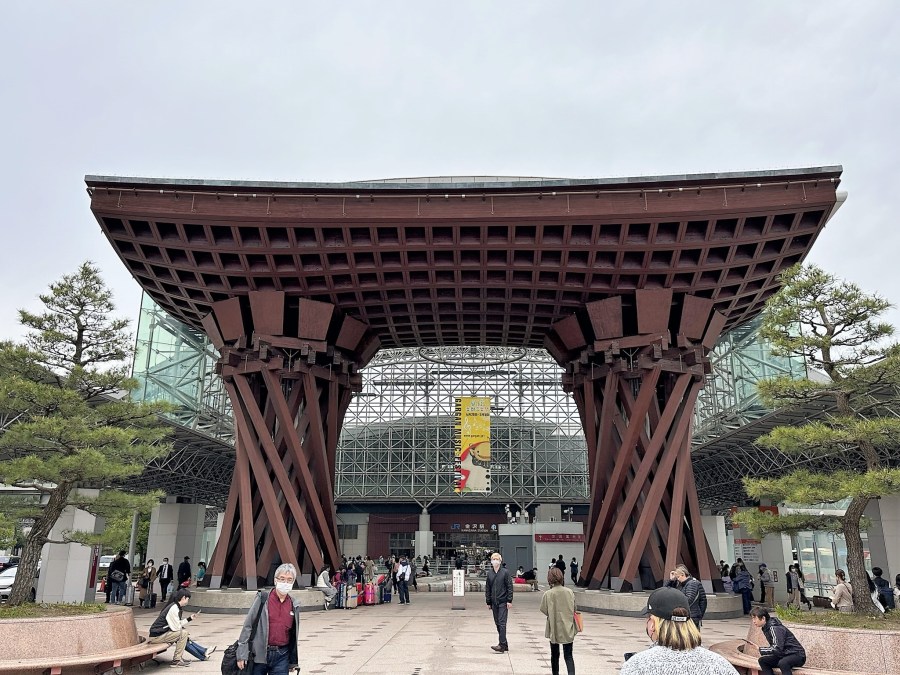Kanazawa, Japan
April 2023
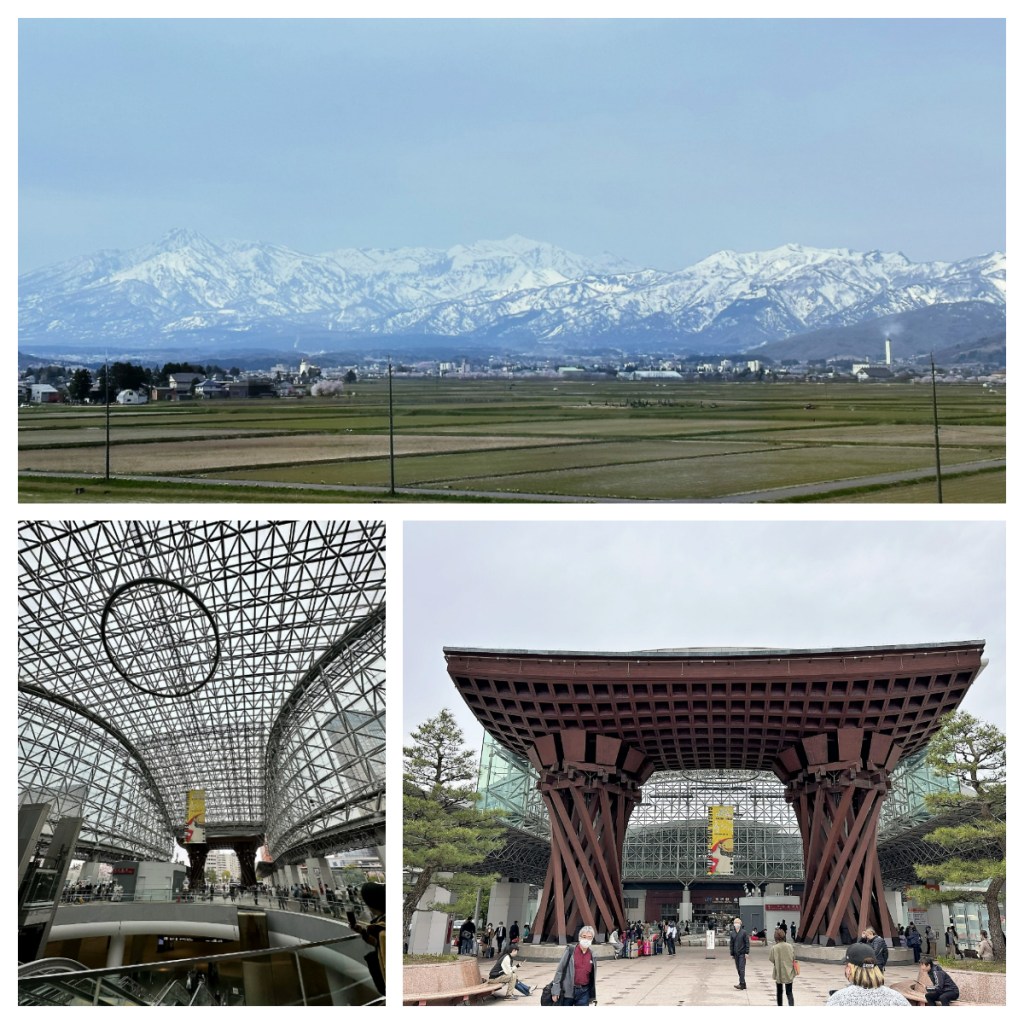
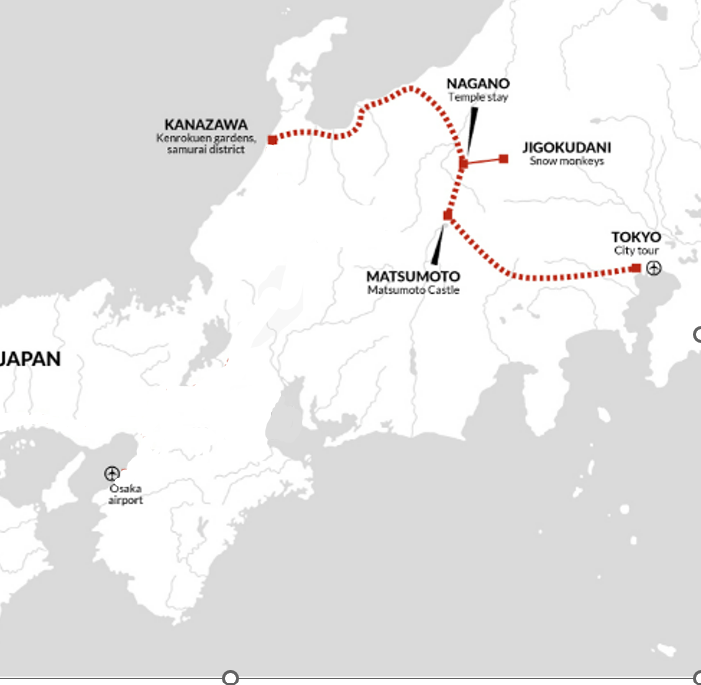
We took a public bus to the train station, to catch the train 1.5 hours to Kanazawa (public transport here is so efficient and easy), the capital of the Ishikawa Prefecture. The train took us through the beautiful Japanese Alps, passed rural towns filled with cherry blossom, overlooked by towering snow-capped mountains.
Kanazawa is a UNESCO City of Crafts and Folk Art and upon arrival I was wowed by the incredible architecture of the train station which is an interesting combination of both modern and traditional Japanese design. It has a massive wooden traditional torii gate combined with a beautiful glass dome. A very impressive welcome to the city.
Our hotel was just a few minutes’ walk from the station and as it was too early to check in, we dropped our overnight bags (it was here we were to be reunited with the rest of our luggage) and went out for some exploration.
Our first stop was to be lunch and for once, the guide’s recommendation for lunch was not a convenience store, but … Gusto, a Cat Robot restaurant. We all jumped at the opportunity. It was just like a diner with lots of food choices (both Japanese and western), bottomless soft drinks AND, most importantly, a Cat Robot as a waiter!! The food was not bad, and the service was fun – I for one definitely enjoyed the experience.

From here we boarded a local bus and headed to the loop bus to Nagamachi, the Samurai district where middle to high-ranking samurai used to live with their families. The city was once the economic and administrative centre of the Kaga Domain, making it one of the largest castle towns in feudal Japan. The area is pretty well preserved as the city avoided the WWII bombing that other Japanese cities endured, and today you can walk down the narrow cobbled streets, surrounded by restored houses, waterways (useful to fight fires) and original earthen walls.
One of the houses is open to the public , the Nomura Samurai House, the home of 11generations of a high-ranking samurai family who served the ruling Maeda family from as early as 1583, right through to the end of the Edo period in the middle of the 19th century. The appearance of the house has been well preserved including the beautiful rooms and the gardens which includes a 400 year old myrtle tree.


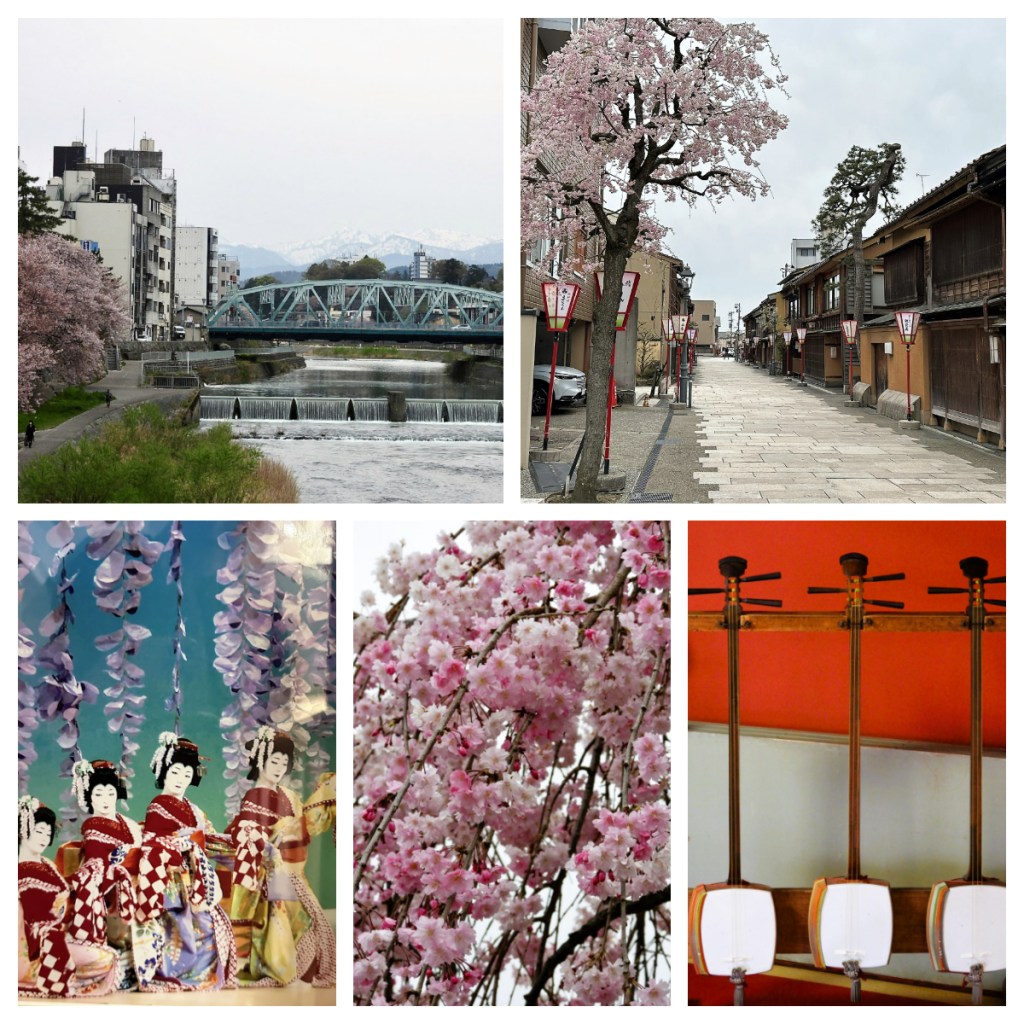
It was then a 15 minute walk across the Sai River (still lined with abundant cherry blossom and views back towards the mountains) to the Nishi Chaya district – one of the geisha districts of the city, where we visited the Kanazawa Nishi Chaya Shiryokan Museum. The museum is in one of the Chaya houses, a traditional place of entertainment and it was interesting to learn a little more about the elusive geisha culture. (Apparently, watching the Netflix show “The Makanai: Cooking for the Maiko House” gives a good insight in to the culture and traditional of the Geisha and it was next on my train viewing list, once I finished the Age of Samurai.)
By now we could check in to our rooms, and thankfully today was one of those rare days when I had time for a short rest before heading out to dinner at a nearby restaurant. The food was not amazing as the set menu was mostly fish and nothing special in the way of vegetables or other food to try but I made the most of it by trying the local drinks (as it was all you can drink for 2 hours !) Sake, plum wine and local beer. All of which aided a decent night’s sleep.
I was up before 6am to do something very important on day 7 – laundry. The hotel had machines that took 2 hours so trying to find the right time where I had the time and there were free machines was a challenge – for me early morning was that time.
Let’s pause for a minute while I do my washing to talk about the wonders that are Japanese toilets! 7 days in and they are always clean, always have a heated seats and various washing functions – some even have privacy sounds (played whilst doing your business) and our Kanazawa hotel one even has its own hand basin that runs water when flushing! Despite the brilliance of the toilets, public toilets rarely seem to have anything to dry your hands with🤔, no towels (paper or otherwise) or hand driers – I wonder why??

Washing and toilet musing done, it was time to enjoy what was (and would continue to be) the best hotel breakfast of the trip. I started with chicken cutlet with Kanazawa curry (yum) and then sweet potato and coconut milk sweet soup with Warabi Mochi, a chewy, jelly like cube made from Warabi starch (a type of fern) rather than rice starch (yum yum).
With a full belly I was ready to start another day of exploration. There was no need for the Loop bus pass that our guide had recommended, as we discovered that most places on our list for the day were within 10-20 minutes’ walk from each other so off we went on foot towards the first stop of the day at the Omicho Market, the largest market in the city since the Edo period!

The over 200 shops in the covered network of ‘streets’ mainly sell fresh fish and produce but you can also find a whole range of other random items such as flowers, clothes, household items … if I was a fan of seafood (which I am not), this would be a great place to enjoy the freshly prepared delights including oysters, eel and horny turban snails!
From the market it was just a short 10 minute walk to the Kanazawa Castle Park. Not surprisingly on the grounds of the Kanazawa Castle. Kanazawa, grew around the castle, which was the seat of the powerful Maeda Clan, lords of Kaga, once the second most powerful clan in Japan (this is sounding more like Game of Thrones by the day!).
Much of the castle has been rebuilt numerous times, the last time after a fire in 1881. We had decided not to go into the castle, but enjoy the beautiful park with its cherry blossom as we walked through and the Ishikawa-mon Gate (dating back to 1788) and into what used to be the castle’s outer gardens. Today, Kenrokuen, which literally means “Garden of the six sublimities”, is considered one of Japan’s most beautiful landscape gardens.
The “six sublimities” relates to a Chinese landscape theory of the six essential attributes required to make a perfect garden. Spaciousness, seclusion, artificiality, antiquity, abundant water and broad views. Having spent some time walking around the beautiful gardens, I can agree, that it definitely meets those criteria.
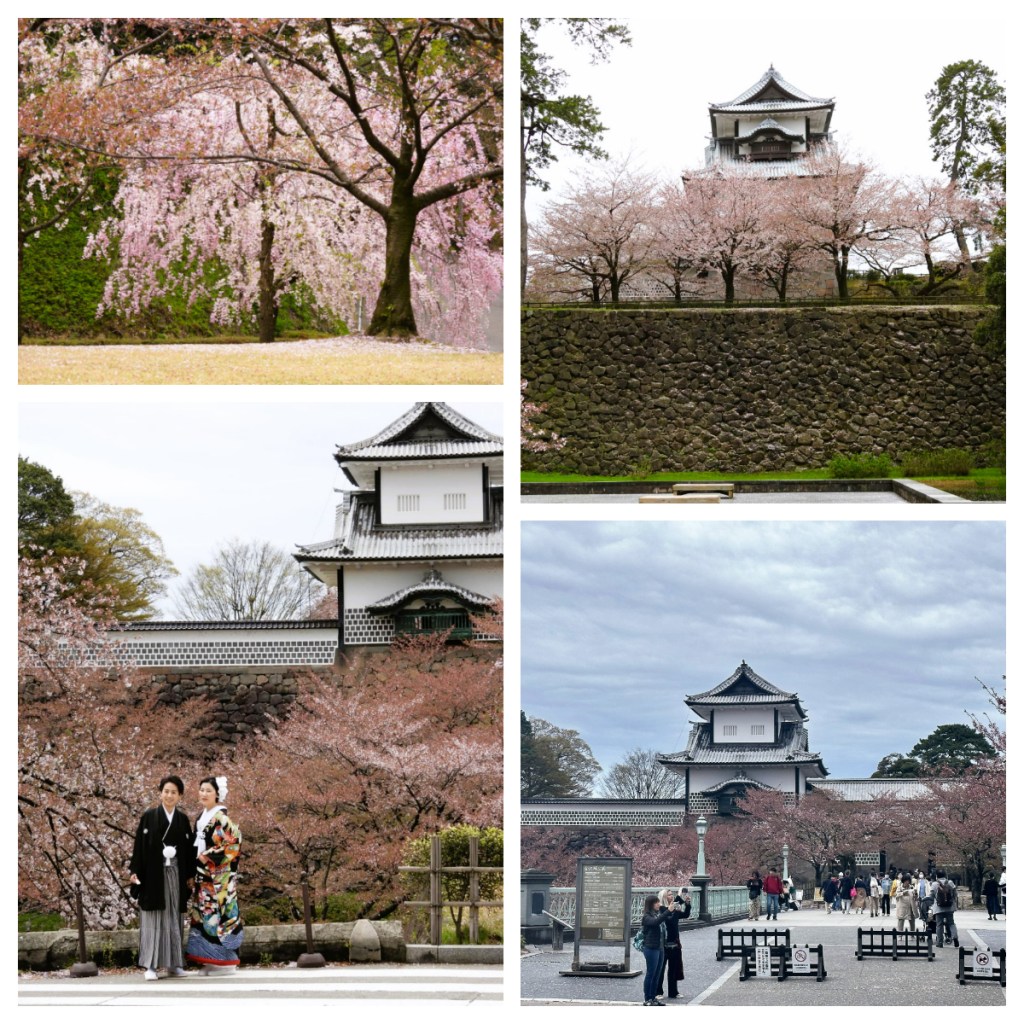
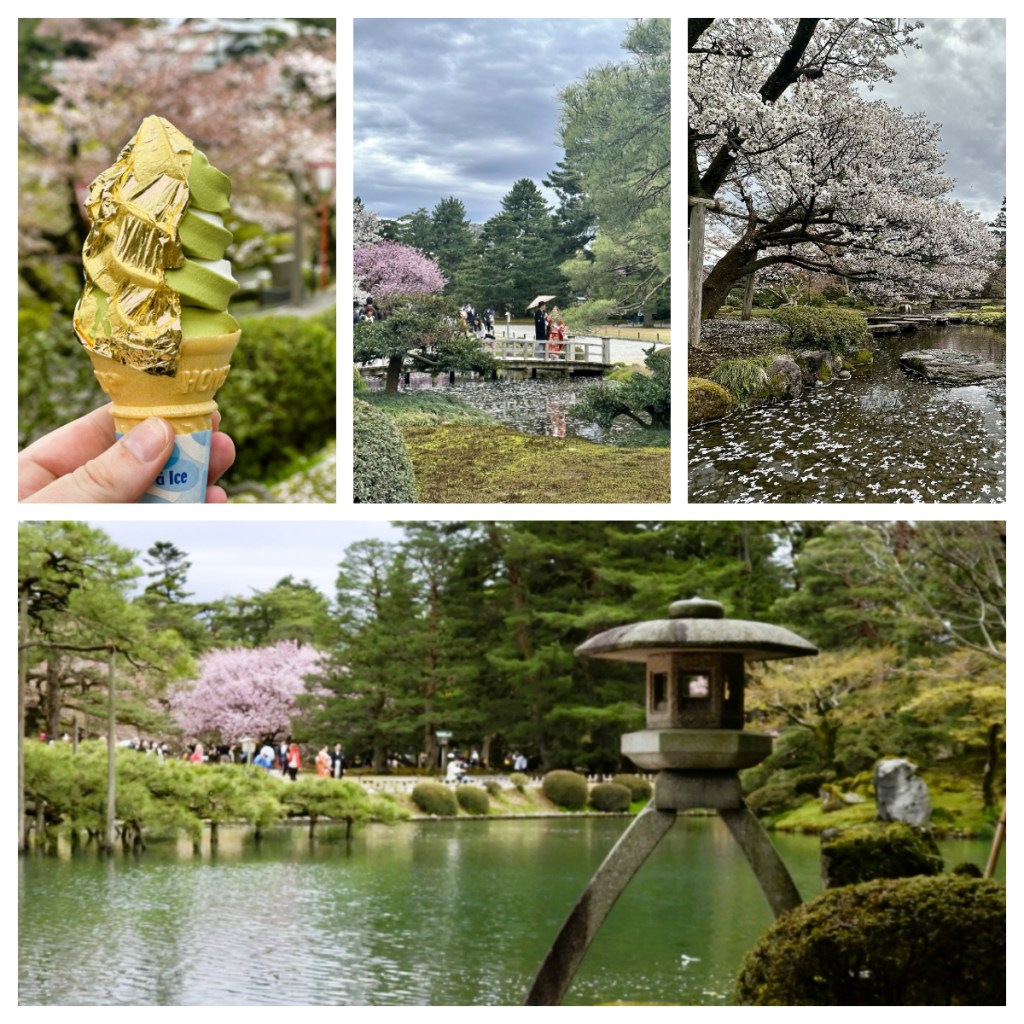
There was a small area of shops near the entrance to the park where I decided it was time to try a local delicacy – a soft serve matcha ice cream, covered in gold leaf! Now, the matcha ice cream is probably a Japanese wide phenomenon, but the gold leaf is unique to Kanazawa. Kanazawa actual means ‘gold marsh’, and the city is Japan’s ‘Gold Leaf capital’, producing 98-99% of the nation’s gold leaf. Hence the use of it wherever they can lol. I can’t say it tasted of anything, but it certainly looked pretty lol.
Upon entering the gardens, we paid ¥500 (around NZ$6) for a combined ticket that gave us entrance to the park as well as to one of the nearby museums. (We learnt afterwards that if you entered via a different gate there was no charge!) The gardens were beautiful, some trees still in full blossom, others already ‘snowing’ petals. Lots of people dressed up in their traditional outfits having photos taken (here it mostly looked like local people but that is an assumption).
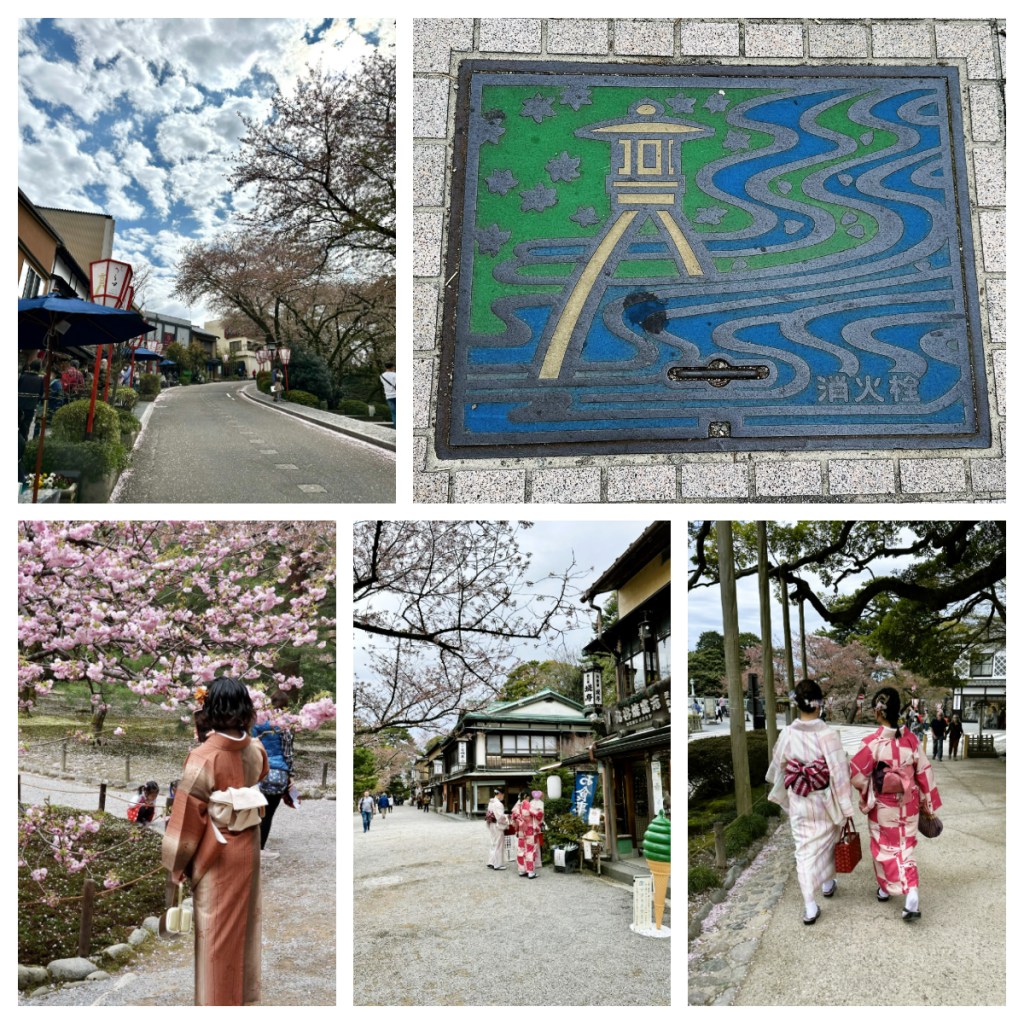
One of the key attractions in the gardens is the iconic, two legged Kotojitoro Lantern (most stone lanterns have only one leg). It is a symbol of the gardens as well as the city (even appearing on its manhole covers) and I expected it to be huge (well, it appeared huge in all the photos I had seen of it)! So we walked around the gardens, looking for the famous “thing” – turns out we had already passed it and taken photos of it without even realising it was the “thing” lol. I had expected it to be 10 metres tall when in fact it was only 2 (and part of that is submerged in the lake).
Given that Kanazawa is the city of Crafts & Folk Art, we thought it only right to visit the small Museum for Traditional Arts and Crafts, just on the edge of the gardens. The museum houses beautiful examples of local handcrafts include gold leaf (of course) and dyed silk.
We exited the gardens and walked down a beautiful street where the cherry blossom was snowing and blowing around in the breeze and head towards one of the other geisha areas of the city – the Higashi Chaya District. This is the largest of the preserved Geisha districts in the city and apparently Geisha culture still flourishes here.
To have a “tourist” Geisha experience, it is necessary to book months in advance, so we just enjoyed a Tea House experience in one of the preserved Chayas. With a menu only in Japanese our choices were a bit hit and miss but I managed to get a coffee and a pretty, if not particularly tasty traditional confectionary.

After another huge walking day, I was ready to head back to the hotel so left the others back at the market to enjoy a seafood dinner and made my way back home.
(After thought – another great quirk about Japan is their adherence to rules. They will stand at a crossing waiting for the ‘green man’ even if there is no traffic in sight! I made the mistake a couple of times of just crossing and got some odd looks from other pedestrians who were waiting patiently lol)

